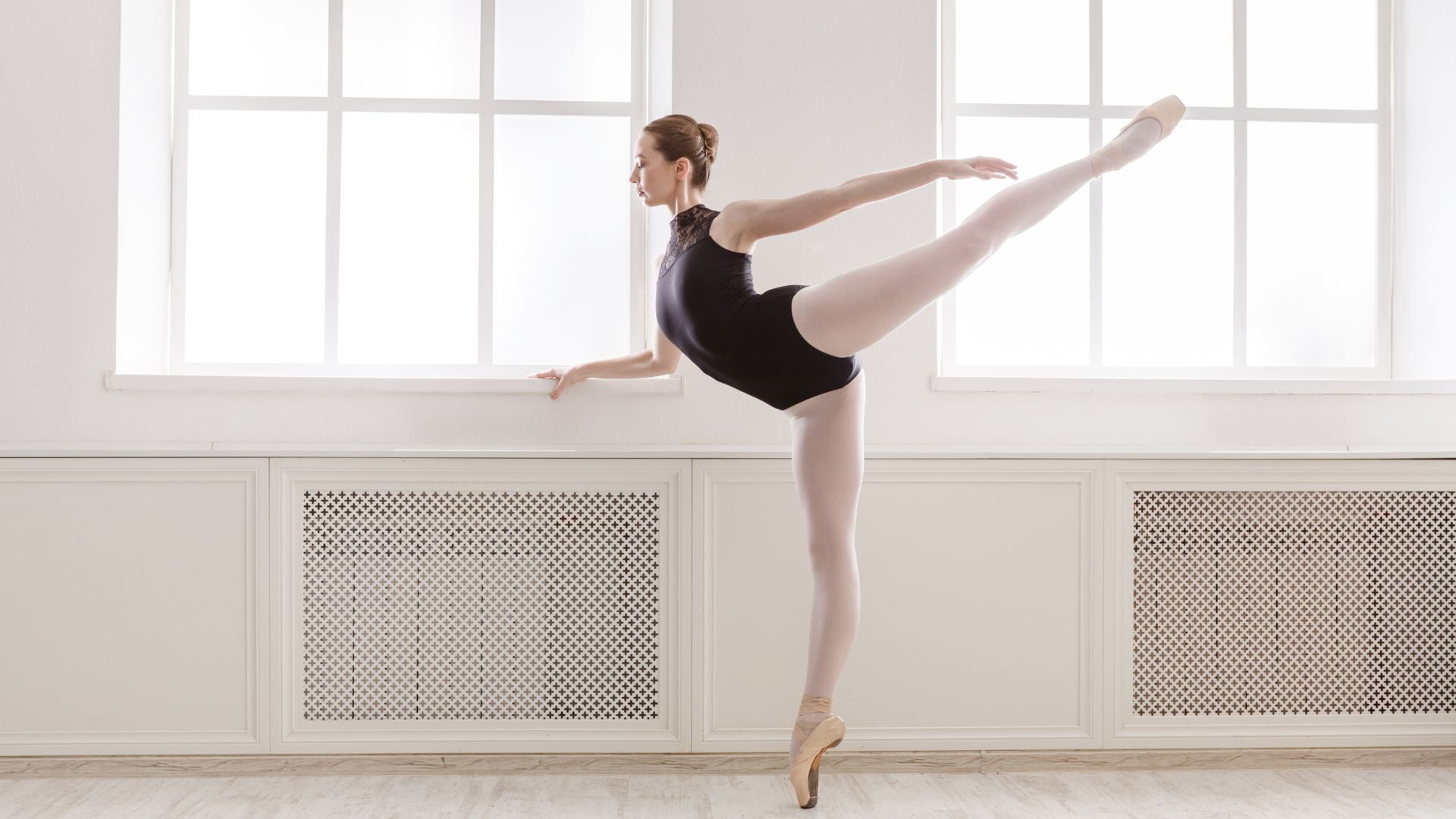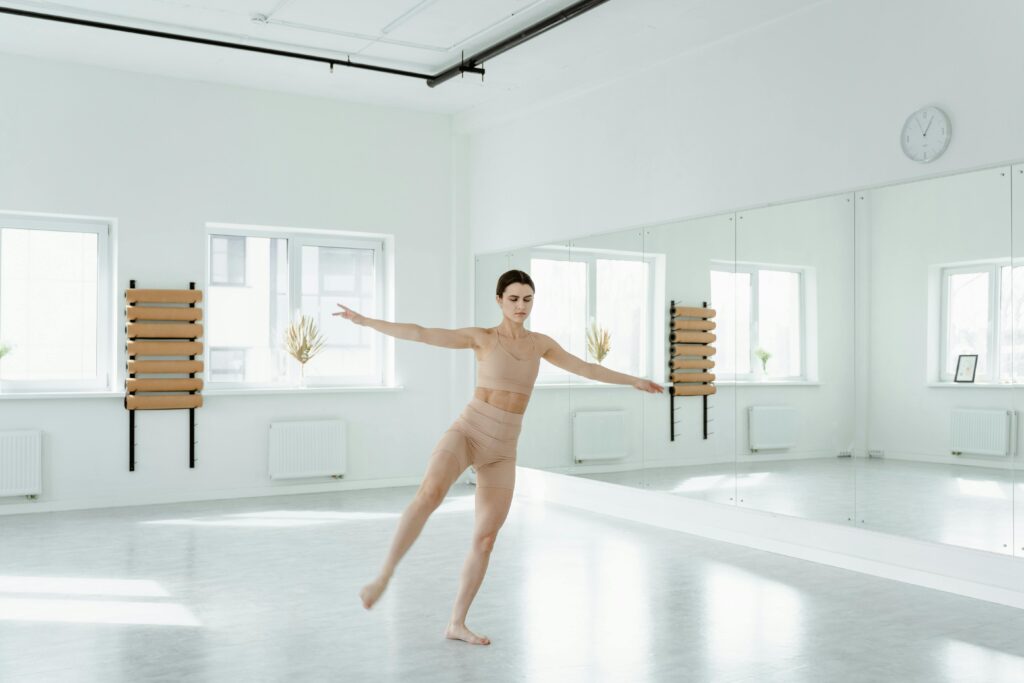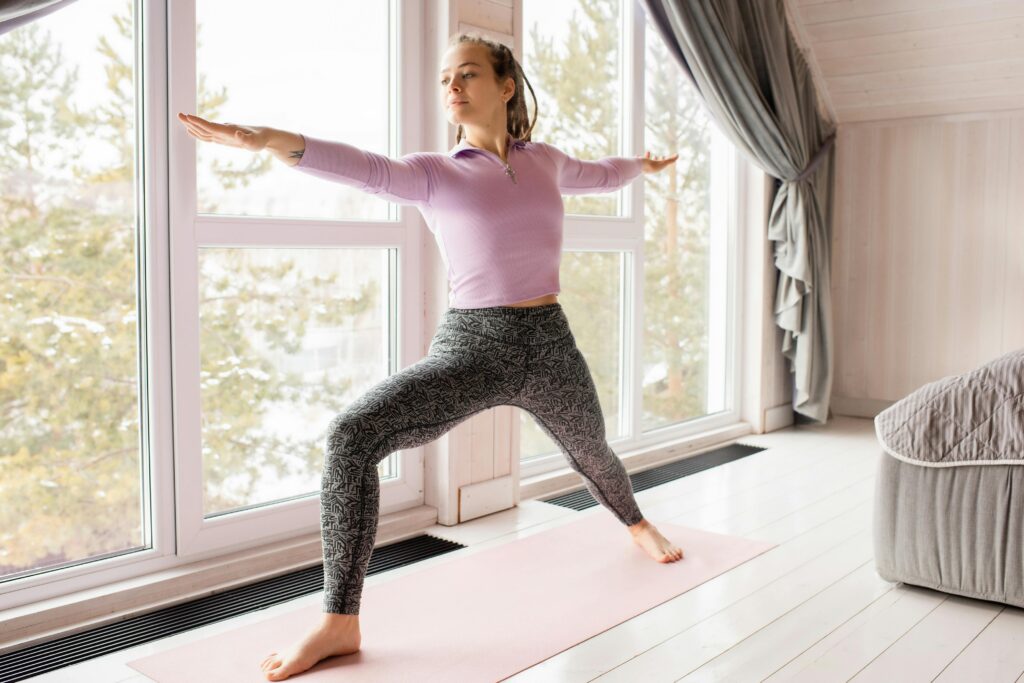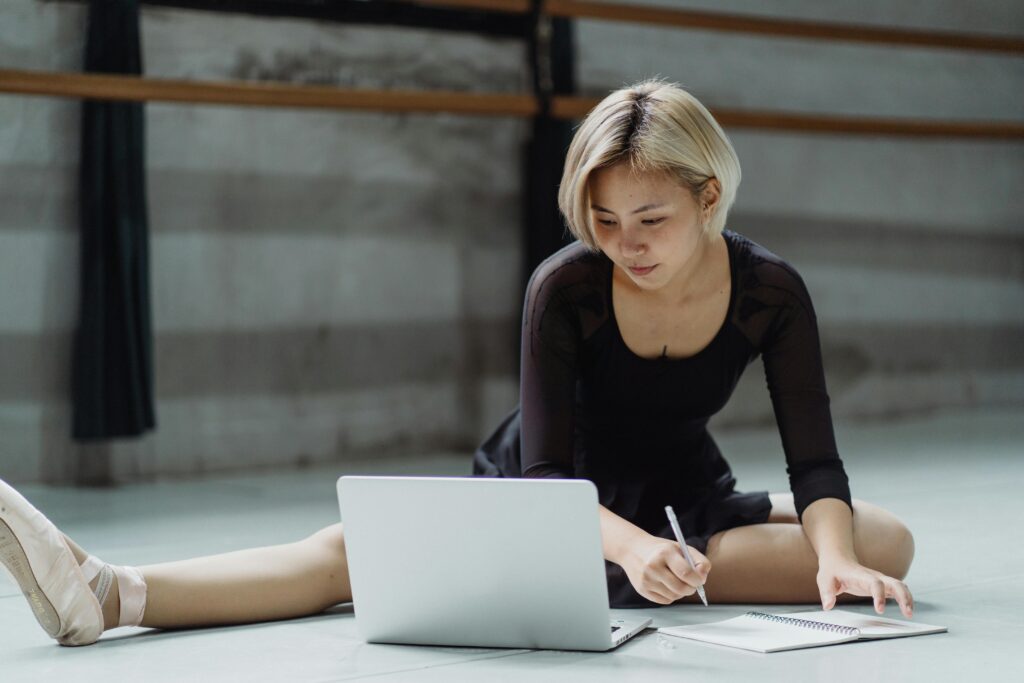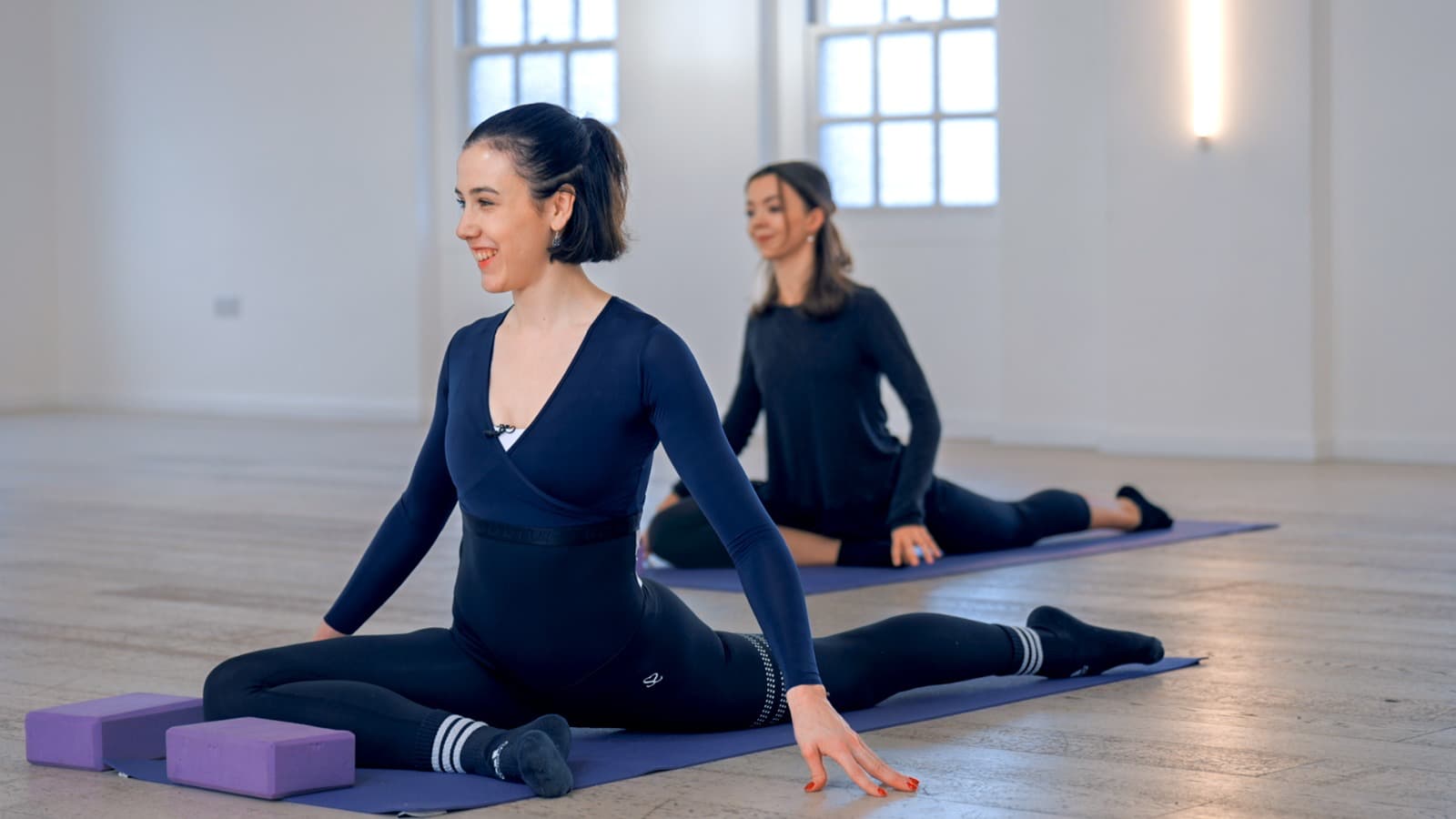The Arabesque, a classic ballet pose (position) which every ballerina has to achieve, characterised by a gracefully extended leg and a poised upper body, embodies elegance and artistry. Whether you’re a ballet dancer or simply interested in mastering this beautiful pose, the Arabesque requires a combination of strength, flexibility, and proper technique. In this article, we will explore this pose and the steps to achieve a stunning Arabesque, unlocking your inner grace.
What is the Arabesque position and why is it important?
The Arabesque position in ballet is a fundamental pose that showcases the dancer’s balance, extension, and control. It involves standing on one leg while the other leg extends behind the body to the back ranging from low to very high. The torso remains upright, creating a beautiful straight line from the fingertips through the leg to the pointed toe. The arms are typically held in various arabesque positions. Be it first, second, third or fourth arabesque to enhance the overall aesthetic and épaulement of the pose.
In the Vaganova method, there are four Arabesque positions, each emphasising a different angle and level of leg extension:
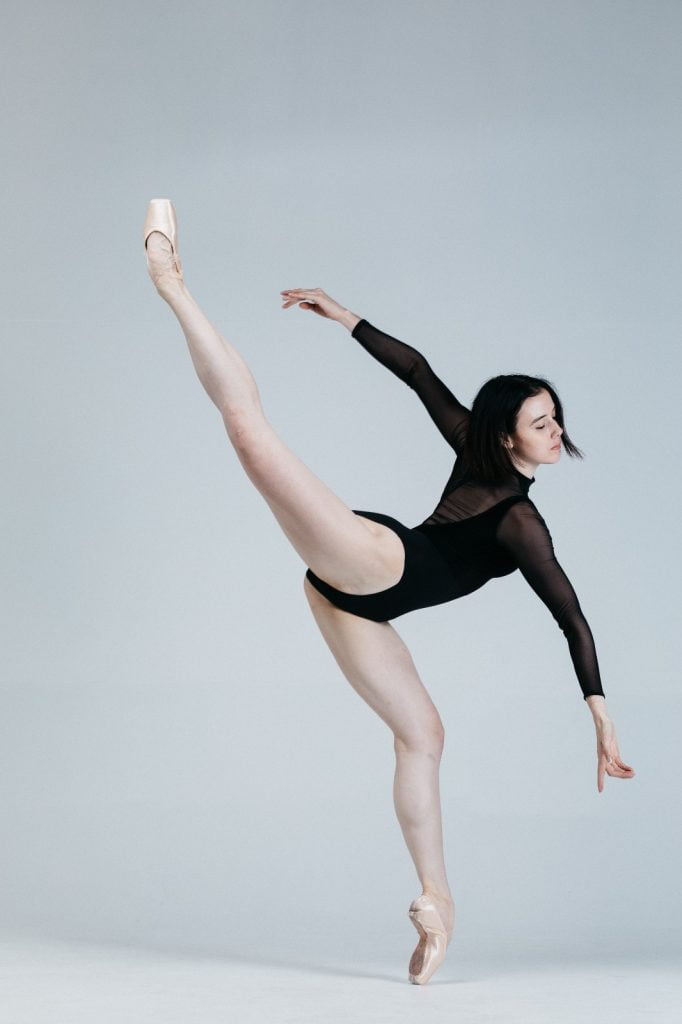
- 1st Arabesque: In the 1st arabesque, the dancer stands on one leg with the other leg extended behind the body. The working leg is straight and pointed, forming a diagonal line with the torso. The arms are positioned elegantly, with the supporting arm extended forward at shoulder height and the other arm extended back, creating a balanced and picturesque line.
- 2nd Arabesque: In the 2nd arabesque, the dancer stands on one leg with the other leg extended to the side. The working leg is straight and pointed, forming a straight line from the hip to the toes. The arms are extended in a rounded shape, with one arm reaching forward and the other arm extending to the side, mirroring the position of the legs.
- 3rd Arabesque: The 3rd arabesque is a variation where the dancer stands on one leg with the other leg extended to the front. The working leg is straight and pointed, forming a line parallel to the floor. The arms are extended gracefully, with one arm reaching forward and the other arm positioned slightly lower and back, creating a harmonious and balanced composition.
- 4th Arabesque: In the 4th arabesque, the dancer stands on one leg with the other leg extended behind the body, similar to the 1st arabesque. However, in the 4th arabesque, the working leg is bent at the knee, creating a distinctive shape. The arms maintain a harmonious position, with the supporting arm extended forward and the other arm reaching back, coordinating with the position of the legs.
Along with the basic arabesque positions here are some more arabesque terminology.
- Arabesque à Terre: This position is performed on the floor with the working leg extended directly behind the body at hip level while the body remains upright. The back leg should be turned out while maintaining stability and control.
- Arabesque en l’Air: This position involves a fully extended working leg lifted as high as possible, often reaching a 90-degree angle or higher. The supporting leg must maintain a strong foundation, and the body should maintain an upright posture and sense of balance.
These positions are important in ballet for several reasons, the most important being that they allow dancers to perform more complex movements and sequences with precision and fluidity. The Arabesque positions allow dancers to showcase their leg extension and create a beautiful line from the fingertips through to the extended leg. These positions emphasise the aesthetic qualities of ballet and contribute to the overall elegance and grace of a dancer’s performance.
What muscles are used for a successful Arabesque?
A successful Arabesque in ballet engages a variety of muscles throughout the body. Here are the main muscle groups involved:
- Gluteal muscles: The gluteus maximus, gluteus medius, and gluteus minimus play a crucial role in the Arabesque. The most work occurs where the hamstring connects with the glutes (the base of glute and top of hamstrings). Having good connection with the base of glutes and hamstrings leads to proper alignment and line where the leg is extended behind you and turned out.
- Hamstrings: The hamstrings, including the biceps femoris, semitendinosus, and semimembranosus, are vital for leg extension in the Arabesque. They help to lift the leg behind the body while maintaining control and stability. Try out a long hamstring stretch class, as this is invaluable here!
- Core muscles: The core muscles, including the rectus abdominis, obliques, and deep stabilising muscles, provide stability and control throughout the body. A strong core helps maintain an upright posture, preventing excessive leaning or arching of the back.
- Back muscles: The erector spinae muscles, located along the spine, contribute to the alignment and extension of the back in the Arabesque, so strong and flexible lower back, upper back, and shoulder muscles are essential. They are critical to maintaining an upright and elongated posture while executing the pose. Our online studio has a fantastic ultimate back workout class you can try!
- Hip flexors and abdominals: The hip flexor muscles, such as the psoas major and iliacus, as well as your abdominal muscles need to be both strong and flexible to allow the back to properly extend.
Aside from Arabesque, what movements are associated with Arabesque?
While the Arabesque is a prominent movement in ballet, there are several other movements and positions associated with it that use the same muscles required to execute them well. Some of these include:
- Attitude: Attitude is a position where the working leg is lifted and bent at the knee, while the supporting leg may be either on the ground or slightly lifted. The lifted leg is turned out and positioned to the front, side, or back, creating a shape similar to the curve of the letter “L.” Attitude can be performed in conjunction with Arabesque, creating dynamic and visually striking lines.
- Developpé: This is a movement where the working leg is extended and unfolded from a position on or near the supporting leg such as retiré or passé. It involves a controlled and gradual lifting of the leg while maintaining proper alignment and turnout. Développé is a challenging movement that requires a lot of strength to execute well. Long holds, conditioning and controlled slow movements in class are key to building strength .
- Grand Battement: A powerful and dynamic movement, the working leg is lifted to its highest extent in all positions , emphasising a strong extension and a pointed foot. It involves a swift and controlled kick, reaching the maximum height while maintaining balance and alignment. Grand Battement can be performed in all positions including arabesque , showcasing strength and flexibility.
- Penché: This movement involves a deep forward bend from the waist keeping the upper body lifted and not collapsed, while one leg extends behind the body. The torso leans forward as much as you can control, starting small and gradually getting greater as you get stronger. We aim to be parallel to the floor, while the extended leg rises towards the ceiling like a 6 o’clock.The upper body must always remain supported. A strong pulled up supporting knee is critical here to enable stability and balance.This movement combines the elements of flexibility, balance, and control, often transitioning from or into an Arabesque position. A challenging movement that requires a lot of practice
- Promenade: This is a turning movement where the dancer rotates gracefully on the ball of the foot one leg while maintaining a lifted and extended position of the other leg, such as in Arabesque. It requires balance, core strength, and control as the dancer rotates smoothly and elegantly. Make sure the supporting leg is very pulled up, knee cap and thigh engaged whilst lifting out of the supporting glute, to enable good stability.
These movements add depth, complexity, and beauty to a performance, working with the Arabesque you’ve worked hard to achieve.
What should you practise to enhance this movement?
Strengthen your core, inner thighs and backs of legs
A strong core and backs of legs muscles are essential for achieving and holding an Arabesque position with control and stability. Incorporate exercises such as upper back lifts, scissors of the legs, floor barre, leg lifts, and exercises with the Pilates ring into your warm up routine to build core strength and develop the necessary muscle connection. Targeting the hamstrings, inner thighs and base of glutes will provide the foundation for a solid and beautiful Arabesque. To help build your core, here’s an online studio class with guided training specifically for your arabesque, as well as a useful floor barre class to try!
Work on flexibility and extension
Flexibility plays a crucial role in achieving a graceful Arabesque. Regular stretching exercises for the legs, hips, and back will help increase your range of motion, so it’s a good idea to incorporate stretches for your hip flexors , splits, and controlled backbends to improve flexibility in these areas. Additionally, focus on strengthening and stretching your feet and ankles which will help you use your leg muscles more effectively and enable you to maintain a beautifully pointed toe in the Arabesque position. You can try some online classes at home too, like this hip manifestation stretch class!
Master the technique
Proper technique is key to executing a stunning Arabesque, which you can learn in this online studio class. Start by standing tall with good posture, engaging your core muscles. Shift your weight onto one leg while placing the opposite leg behind you in a tendu, slowly extending it higher gracefully.
Keep your hips square, your tummy scooped in a straight line, avoid twisting, and imagine your leg lengthening and turning out as you lift it higher.two hips turning out. Simultaneously, extend your opposite arm forward, creating a first arabesque line pulling your shoulders down like they are pressing on a table. Maintain a relaxed neck and hands lifted chest for an elegant and balanced line.
Practice balance and control
Achieving a balanced and controlled Arabesque requires practice and focus. This will help you with promenades and controlled demi pointe balance Practice holding the pose while maintaining your alignment and balance. For more challenges try on a wobble board! You can try my balance course here. l. Incorporate exercises that challenge your stability, such as standing on one leg or performing relevés, to improve your balance and remove any wobbling during an adagio in the centre . You can also work on this in our online studio Arabesque workout class. A huge hit with our members and delivering big results!
Get professional coaching
If you are serious about mastering Arabesque, along with many other things, consider seeking guidance from a ballet teacher or a coach. They can provide personalised feedback, correct any alignment issues, and guide you through exercises specifically tailored to improve your Arabesque technique. Their expertise and insights will help you progress faster and refine your execution.
Ballet with Isabella is a leading coach and online platform for ballet dancers of all levels, making it the perfect space to perfect your Arabesque! You’ll be guided by Isabella, the first and youngest British girl to be trained at The Vaganova Ballet Academy, giving you access to incredible knowledge, insight, and inspiration. Classes are available in person, or you can subscribe to affordable online ballet classes and practice wherever you are in the world.
Remember to embrace the journey, stay dedicated, and enjoy the transformation as you unveil your inner grace and poise. With time, patience, and proper training, you’ll be able to perform this iconic pose with elegance and confidence.
